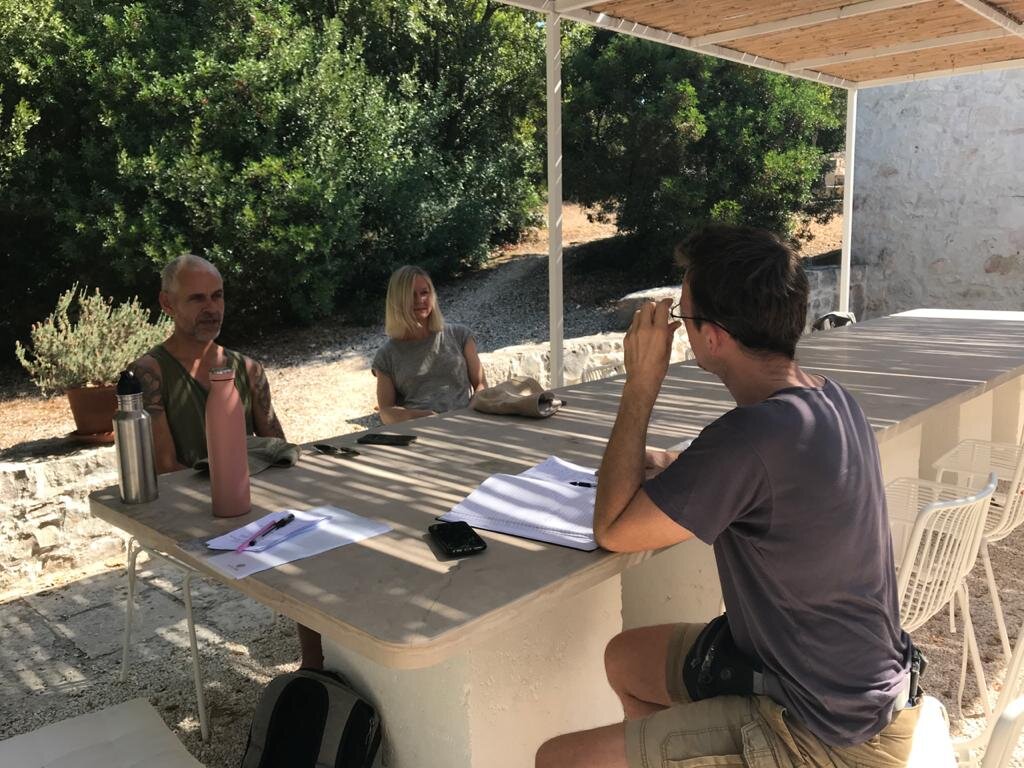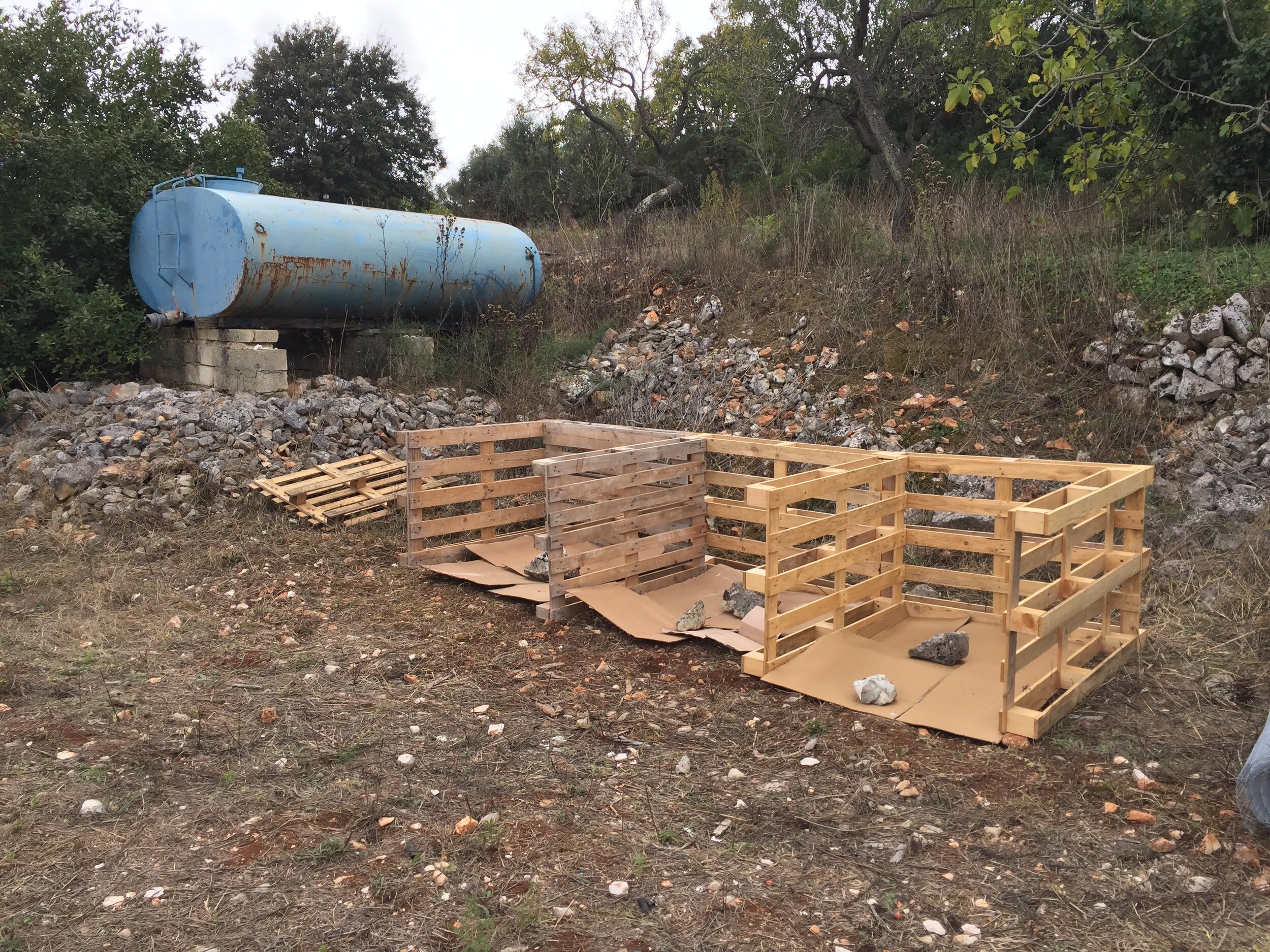
YogApulia Retreat Centre, Italy
YogApulia is a boutique retreat centre for yoga and meditation, set up and run by dedicated Ashtanga yoga practitioners Mark & Nicola. They renovated the centre to create an intimate space in tune with the natural rhythm of nature, where guests can escape from the demands of the modern world to deepen their practice in the beautiful, peaceful setting of the Valle d’Itria in Apulia, Italy.
About the project
Mark and Nicola wanted to introduce more sustainable and organic systems, based on Permaculture—simple and realistic solutions that could be introduced over time that helped reduce costs, flowed more with Nature, and that also enhanced guest experience.
Because YogApulia is located on a large property, Mark & Nicola weren’t sure where to begin, how various permaculture solutions could link together, and what was the most efficient use of their time was. Due to the fact their main focus was on running the retreats (as the business was only two years old), coupled with the economic impact of Corona, they had limited time and budget to work with.
With all that in mind, I wanted to develop a plan that provided a number of simple, realistic and easy to apply permaculture solutions and systems that could be introduced straight away, integrate into the centre’s longer term needs and requirements, save money, and enhance guest experience when retreats were running.
We got started straight away with foundational projects that were easy to implement and maintain and would have the biggest short-term positive impact.
What we did

Initial consultation with Mark & Nicola to explore the project and define what they were looking for, what they'd already done, and what their vision for the retreat centre over the next few years is.

We walked the land to explore and observe what we already had and where new sustainable systems could be implemented and why. Here we also discovered what natural resources we also had at our disposal.

Once we'd defined their needs and requirements, we started getting some systems setup. We started small by building a new compost system—not only did Mark want to join in the fun, but some of the guests did, too!

The first compost system we setup was a long-term compost system. We sized it based on the amount of food waste generated during retreats, and ensured it had room to grow in the future, if required.

Everyone helped!! Here Marvin, Mark and I are fixing chicken wire to the inside of the compartments of the compost areas to allow air to pass through while holding the biomass in place.

We built the new compost area close to a water source and next to the organic garden.

I showed Mark & Nicola how to layer the compost, using what they have from the land - in this case a lot of dried leaves - as the carbon for the compost system

To help make new organic garden beds, first we measured and defined the contours of the land (using our homemade "A" frame!) to dig swales—a very useful technique for building trenches capture and slow down water on sloped land.

Then we dug the swales and laid out the new garden beds.

Something I love about permaculture: Multifunctional, interlinked systems. The new garden beds will receive water from the existing water tank + a gravity-fed drip irrigation system, and they'll receive nutrient-dense soil from the composting beds close by.

The second new composting system we made was worm farms, using old plastic buckets. Worm farms are great for composting food waste during months when no retreats are running.

To help YogApulia harness more energy, I recommended increasing the existing solar-harvesting systems and introducing water harvesting - using the roof of the yoga shala to capture rain water that is then fed into water storage to supply water to organic garden.
The results
Setup two new composting systems, one optimized for when retreats were running and one for when retreats were not.
Built a new organic garden bed right next to an existing water source and soon-to-be-produced fresh soil.
Defined two energy-harnessing systems which can leverage and easily integrate with existing systems, thus making them easier to build and making saving money and energy easy as well.
To learn more about YogApulia, visit: